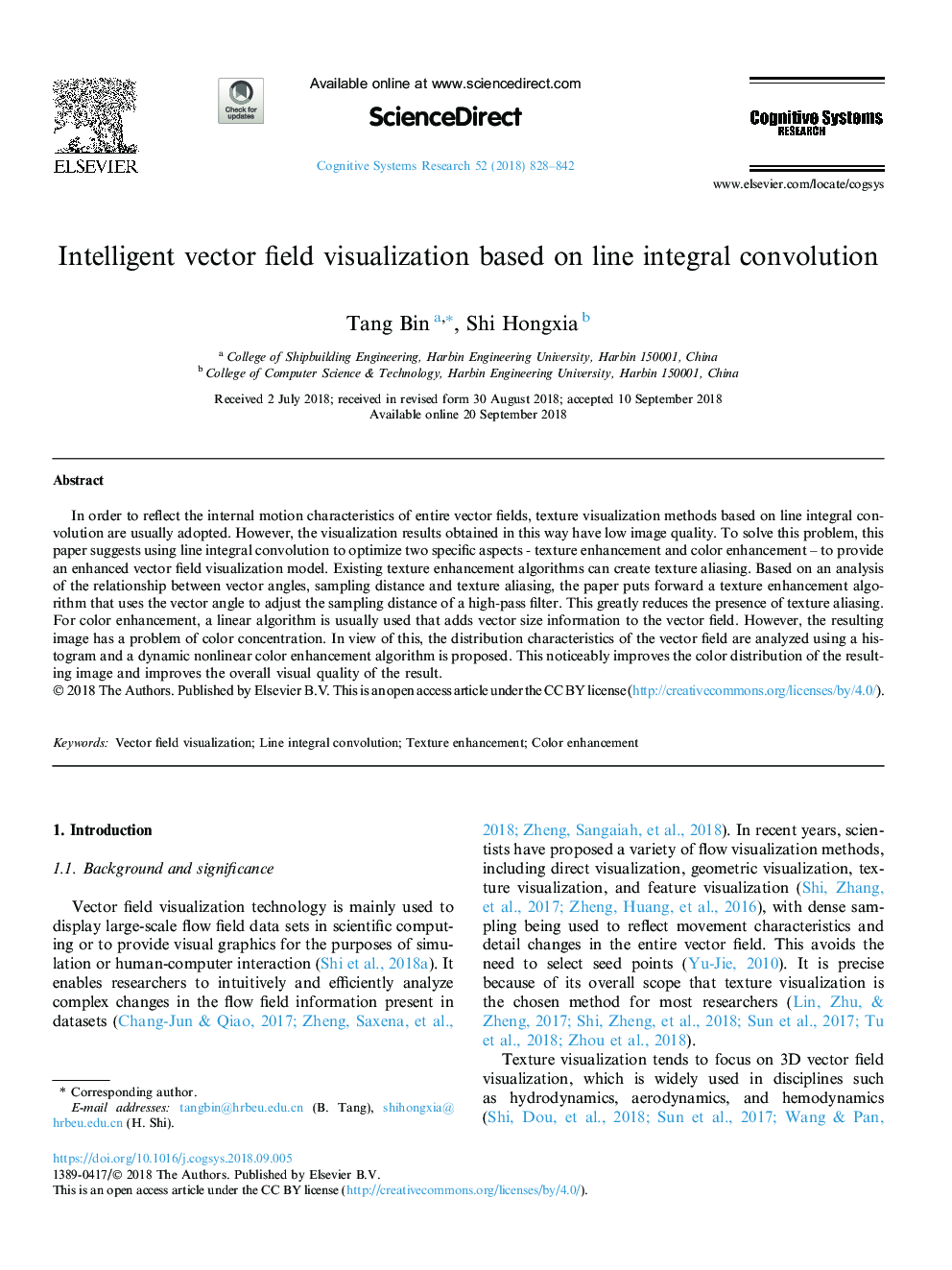| Article ID | Journal | Published Year | Pages | File Type |
|---|---|---|---|---|
| 11002264 | Cognitive Systems Research | 2018 | 15 Pages |
Abstract
In order to reflect the internal motion characteristics of entire vector fields, texture visualization methods based on line integral convolution are usually adopted. However, the visualization results obtained in this way have low image quality. To solve this problem, this paper suggests using line integral convolution to optimize two specific aspects - texture enhancement and color enhancement - to provide an enhanced vector field visualization model. Existing texture enhancement algorithms can create texture aliasing. Based on an analysis of the relationship between vector angles, sampling distance and texture aliasing, the paper puts forward a texture enhancement algorithm that uses the vector angle to adjust the sampling distance of a high-pass filter. This greatly reduces the presence of texture aliasing. For color enhancement, a linear algorithm is usually used that adds vector size information to the vector field. However, the resulting image has a problem of color concentration. In view of this, the distribution characteristics of the vector field are analyzed using a histogram and a dynamic nonlinear color enhancement algorithm is proposed. This noticeably improves the color distribution of the resulting image and improves the overall visual quality of the result.
Related Topics
Physical Sciences and Engineering
Computer Science
Artificial Intelligence
Authors
Tang Bin, Shi Hongxia,
